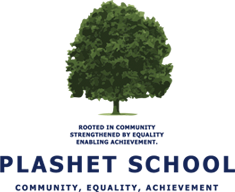Design & Technology
Introduction to Design & Technology
This subject combines intelligence and practical ability to create real products to enhance the world in which we live. When products are imagined, designed and then made, it creates an enormous sense of satisfaction and leads to a sense of achievement. Design and Technology is not about always giving the right answer, it is more about asking the right questions.
Students learn how to overcome obstacles, how to plan systematically, develop their sense of judgement and extend their horizon, and produce artefacts that are a delight to them. The skills they learn and develop are interchangeable. They enhance and support the work in other subjects such as Mathematics, Science, Engineering, Computing and Art.
Design and Technology is all about life, and making life better. It is, quite literally, the nuts and bolts of society. If you eat, sleep, breathe, wear clothing, use technology and do any activity you are engaging with Design and Technology. You could be the next person to have a fantastic idea to improve the lives of millions – who would not want to be a part of that?
Curriculum Content
KS3
During KS3, students will study the different areas of Design and Technology by undertaking lessons in Engineering, Product Design, Architecture, Graphic Design (EPAG), Food Preparation and Nutrition and Fashion and Textiles. Each subject is delivered by a specialist teacher. The KS3 course has making at its heart but also develops a wide range of creative, design and technical skills. Students may work with a set design context or theme in mind. They may find solutions to problems they identify or they could complete short tasks to develop their thinking and making skills.
In Year 9, pupils choose one of the Design & Technology subjects listed below. This will allow them to study the chosen area in greater depth.
- Engineering, Product Design, Architecture, Graphic Design (EPAG)
- Food Preparation and Nutrition
- Fashion & Textiles
KS4
At Key Stage 4, all pupils will all undertake a coursework component in their chosen discipline. Some of the subjects also have an exam requirement.
These are shown on the chart below:
|
|
Food Preparation and Nutrition |
Architecture, Product Design, Engineering and Graphics (APEG) |
Textiles and Fashion |
|
Coursework |
Non Exam Assessment (NEA) 50% of final grade
|
Non Exam Assessment (NEA) 50% of final grade
|
Component 1 and Component 2 (Externally Sat Assignment) 100% of the final grade |
|
Written Exam |
50% of final grade |
50% of final grade |
No Exam |
Design and Technology - KS3
- During KS3 students undertake designing and making tasks which allows them to develop confidence in their practical skills. Projects are linked to core concepts and theory so students have a broader understanding of the subject’s relevance. Students are always challenged to overcome design problems and think critically about existing designs and their impact on our lives.
- Exam Board and Syllabus: AQA Design and Technology - Design and Technology (8552)
- Students studying AQA Design and technology will go into more depth around designing and making skills, accessing more of the department’s tools, machinery and IT facilities, so they will become more independent and confident by the time they reach Year 11.
- In their final year, the students will undertake a single NEA (non exam assessment) project. These projects are set by the exam board and interpreted by the students. This will account for 50% of their final mark. They will also be taught deeper and broader theory and concepts of design and technology. This will prepare them for their written exam in Year 11, worth the remaining 50% of their GCSE.
How students will be assessed at the end of the course
- Non Exam Assessment (50%)
- Exam (50%)
- Enrichment opportunities
Partnership working with a range of STEM related companies including TfL, Open City and participation in competitions and visits.
